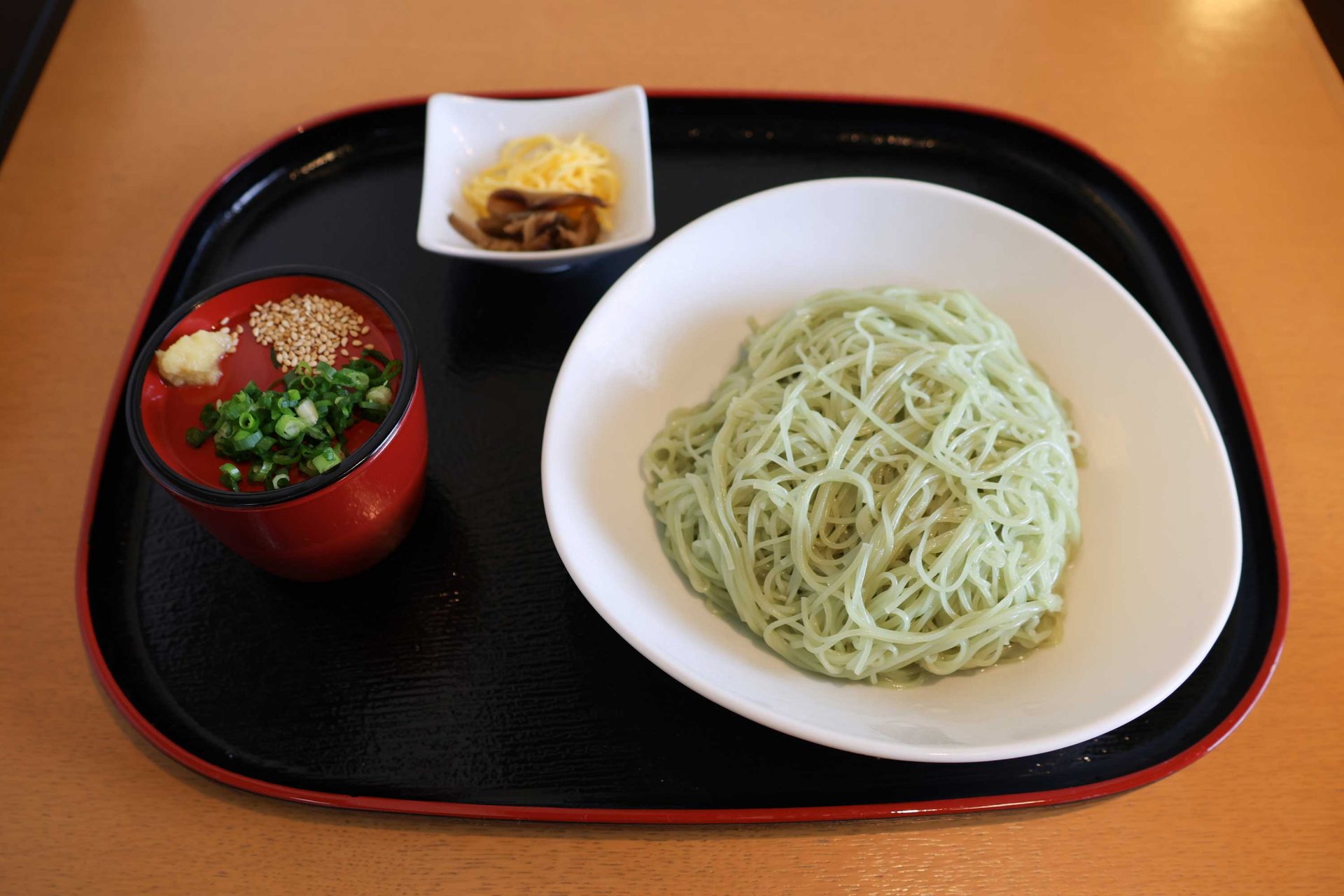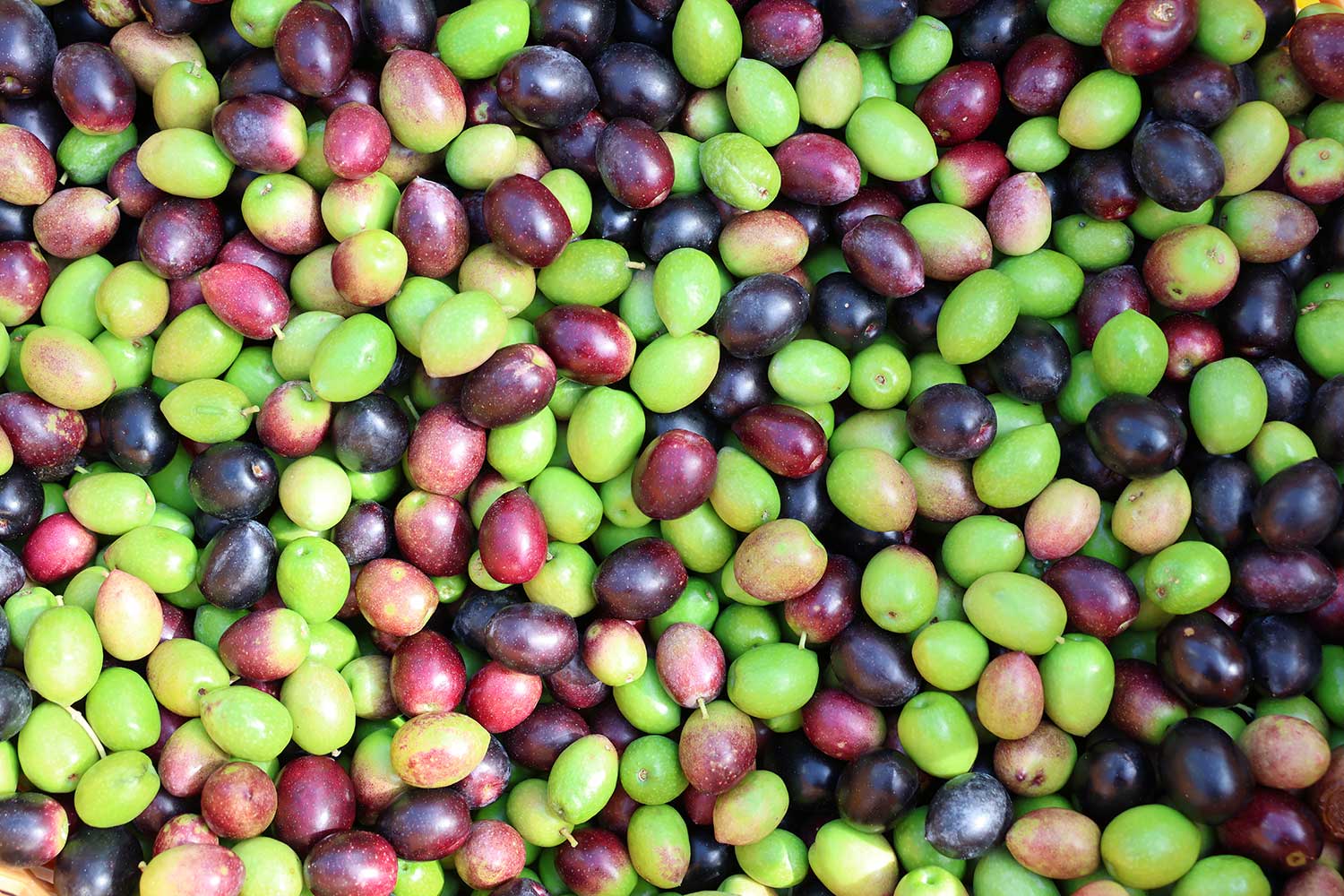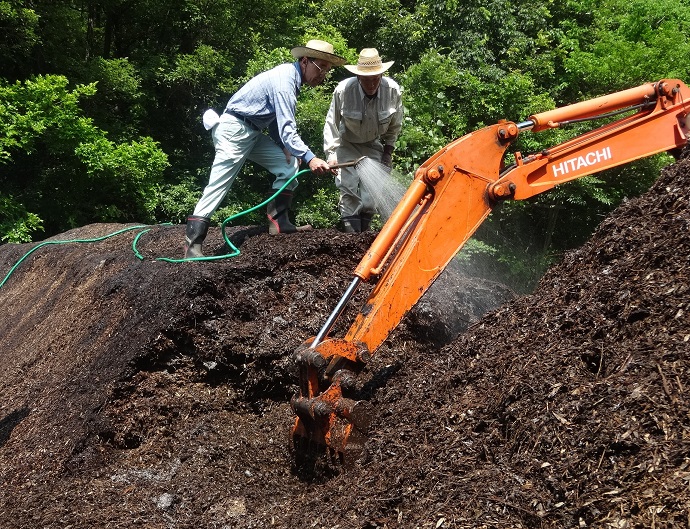
Forest

Sea

Circulation

Community
Growing Olives to Revitalize Local Communities
Olive cultivation and a local brand as developed in Shodoshima Town over the last 100 years
Shodoshima Town Office's Olive Industry Division
(Kagawa Prefecture)
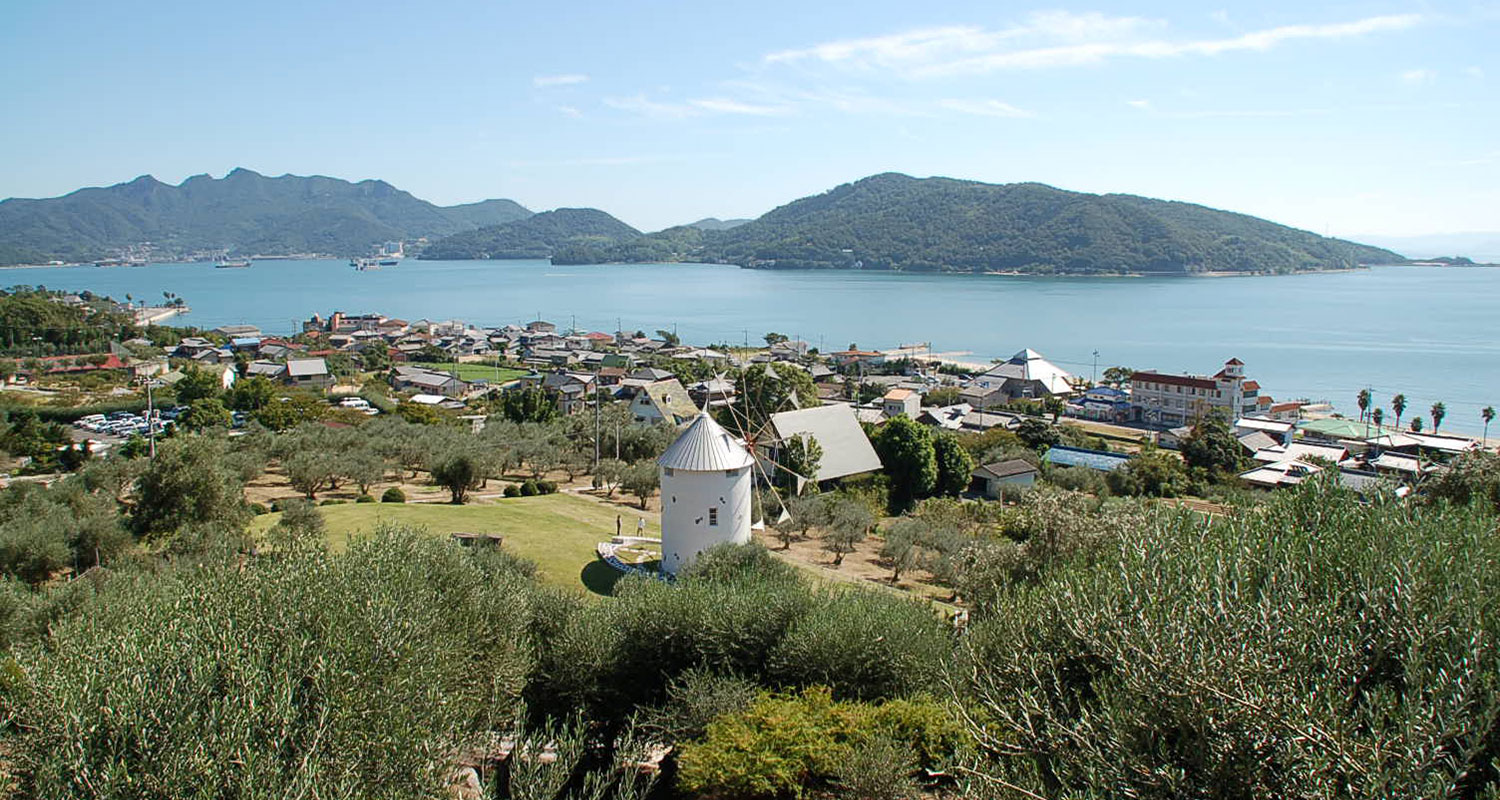
Overview
Shodoshima Town is located on the west side of Japan, on Shodoshima Island of Kagawa Prefecture, which is part of the Shikoku region. The island, with a circumference of 126 km, is made up of two towns, Shodoshima Town (approx. 13,000 residents) and Tonosho Town (approx. 12,000 residents). The core industries are agriculture, tourism, and food production. Shodoshima Town has flourished by producing traditional soy sauce and somen noodles.
In 1908, Japan’s first trial cultivation of olives started on this island. While the national government demanded self-sufficiency of olive oil production to preserve seafood, Shodoshima Island was the only one out of three trial areas that succeeded in cultivating olives, thanks to its mild, dry climate with light rainfall and the tireless efforts of growers. From then on, the local government, businesses, and community worked together to establish an olive industry, succeeding in becoming the top producer in Japan. Olives grown on Shodoshima Island are mostly picked by hand and are shipped across Japan after being oil-cured or salt-cured.
At the same time, the people of the island put their efforts into branding so as to use the olives as a symbol of the island, as well as one of Shodoshima Island’s tourist attractions. Olives are planted as roadside trees, and Shodoshima Island eventually gained the nickname of “Olive Island.” Various product development and sales initiatives are taking place, making full use of the olives. The trees and branches are used for miscellaneous wares and compost, the leaves are turned into tea leaves and aquaculture fish feed, the olive pulp is used for animal feed, the juice is used for drinks and somen noodles, and the oil is used for cosmetic items and more. These initiatives to revitalize the local community are well received by people not only in Japan but also overseas.
Successful outcomes
- The surface area on Shodoshima Island growing olives is 145 ha—the largest olive-growing area in Japan. This area produces 399 t of olives, which is 70% of the olive crop grown in Japan. (2020)
- The olive industry has grown to become a core industry on Shodoshima Island, with about 170 olive farmers and 25 processing companies. (2023)
- With advanced growing and oil extraction technology, the olive oil made on Shodoshima Island has received an award at an international contest for olive oil. In the FLOS OLEI international olive oil guide, numerous companies producing olive oil on Shodoshima Island have been highly praised year by year.
- For over 70 years, Kagawa Prefecture, where Shodoshima Island is located, has been working on the development of olive varieties resistant to anthracnose fungal diseases and has successfully developed the Kaori3go and Kaori5go varieties. Sales of some of these varieties started in 2023.
- Olive pulp produced during the extraction of Shodoshima olive oil is dried and used as animal feed. The cow manure is then used as fertilizer for growing olives, making circular agriculture possible. Cattle and pigs raised on olive pulp feed are of good meat quality and are sold as premium-branded meat at higher prices than existing products.
- Shodoshima Olive Park Michi no Eki (Shodoshima Olive Park Michi no Eki Roadside Station), which blankets 8.2 ha, opened in 1990 and is a major tourist destination with over 380,000 visitors annually. This park is inside an olive farm, along with museum booths relaying the history of olive cultivation on the island and souvenir shops and cafés. The picturesque view here also attracts visitors to the park.
- Local revitalization centered on olives was highly praised, and the initiative was selected as one of the Green Destinations Top 100 Stories in 2022.

The Shodoshima brand: Established via collaboration among growers, companies, and the local government
According to this representative, there are three key factors that led Shodoshima Island to become the no.1 olive-producing area in Japan. Firstly, the climate and environment were suited to growing olives. Furthermore, in 2003, the cultivation area spread quickly after the area was designated as a special zone for structural reform, allowing local companies such as soy sauce manufacturing companies to participate in growing olives. The most-important factor is the dedication and ingenuity of producers and processing businesses.
The municipal government and the prefectural government have been supporting stable cultivation, improvement in oil extraction technology, and quality assurance over the years. At Kagawa Prefecture’s Shodo Olive Research Center, located in Shodoshima Town, sensory olive oil evaluation is held regularly. Kagawa Prefecture has also established a strict quality labeling system in line with the standards of the International Olive Council, creating an environment where producers and businesses can focus their efforts on improving quality.

Shodoshima Town Office’s Olive Industry Division was created in 2008 to celebrate the 100th anniversary of the planting of olives in this area. This division supports and carries out businesses and strategies relating to olive cultivation, processing, marketing, and tourism using olives grown in the area. As for the current state of olive production and initiatives moving forward, a person in charge commented: “Olives are already planted in most of the suitable areas. Moving forward, as producers continue to age, we are entering a time when the olive farms are being passed on to the next generation. Olive cultivation is spreading to other prefectures and areas, but we wish to continue to be no.1 in Japan, both in quality and cultivation technology.”
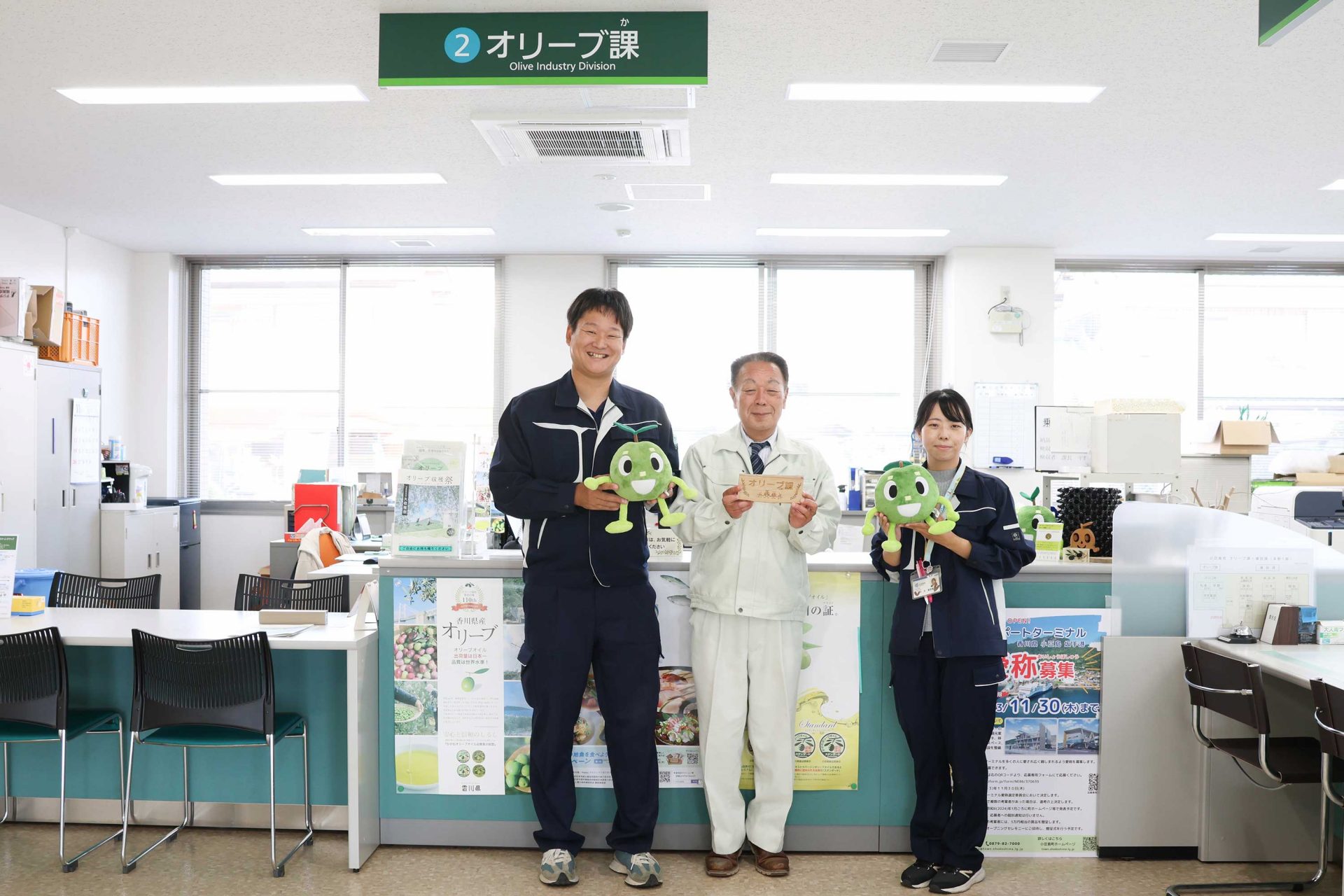
The Shodoshima Olive Top One Project Team including the Olive Industry Division focuses on differentiating quality and high-added-value projects and engages in research & development (use of new varieties, establishment of technology for stable production), human resources development (cultivation training, distribution of cultivation manuals), the realization of high-added-value (organizing olive oil competitions, product development), and the creation of strategies to enhance the products’ reputation (organizing educational school visits and harvesting experiences by students, olive picking events). Recently, the Olive Industry Division has also been focusing on circular agriculture, collecting branches and leaves removed while pruning that had been discarded and turning them into chips for olive compost. Shodoshima Town will continue to engage in olive cultivation that is in line with the times and to take on the challenge of making this area more attractive for residents and tourists, with ideas centered on olives.
Local Revitalization Centered on Olives
Shodoshima Town Office’s Olive Industry Division
https://www.town.shodoshima.lg.jp/gyousei/kakuka/oribu/index.html

